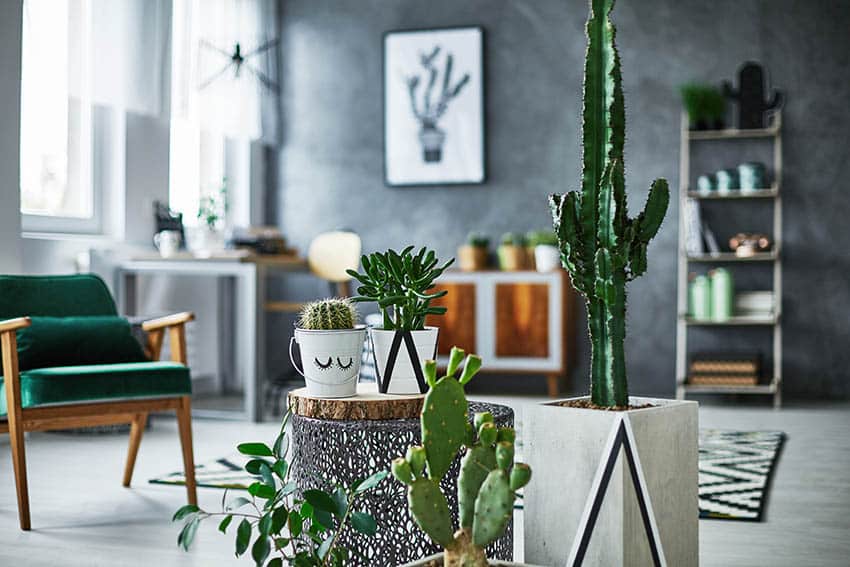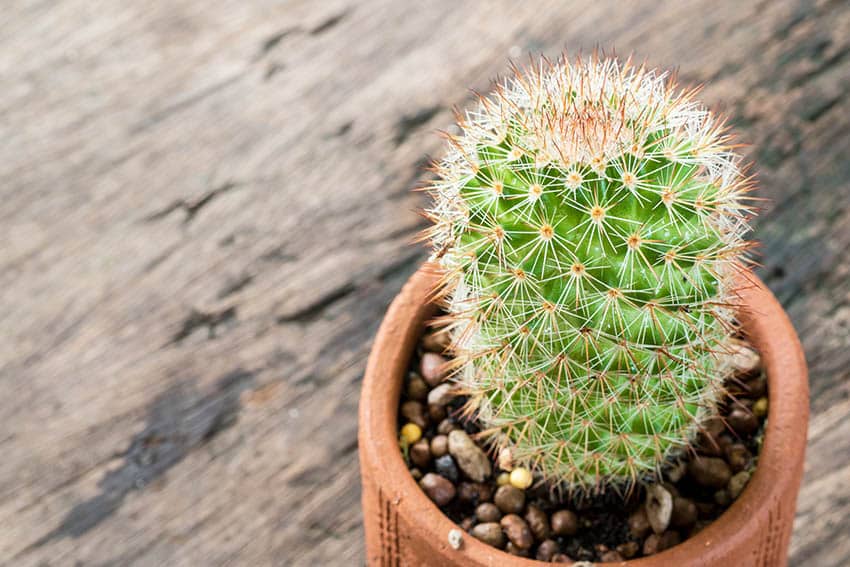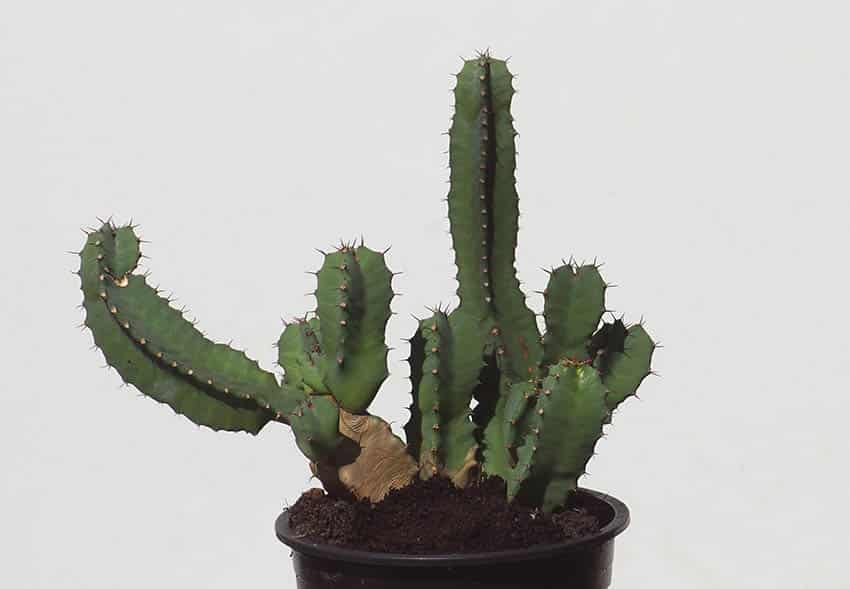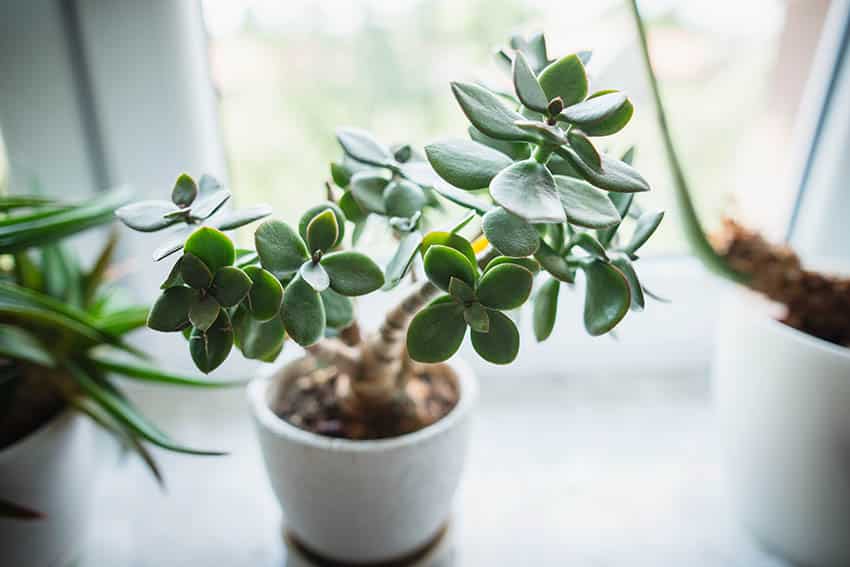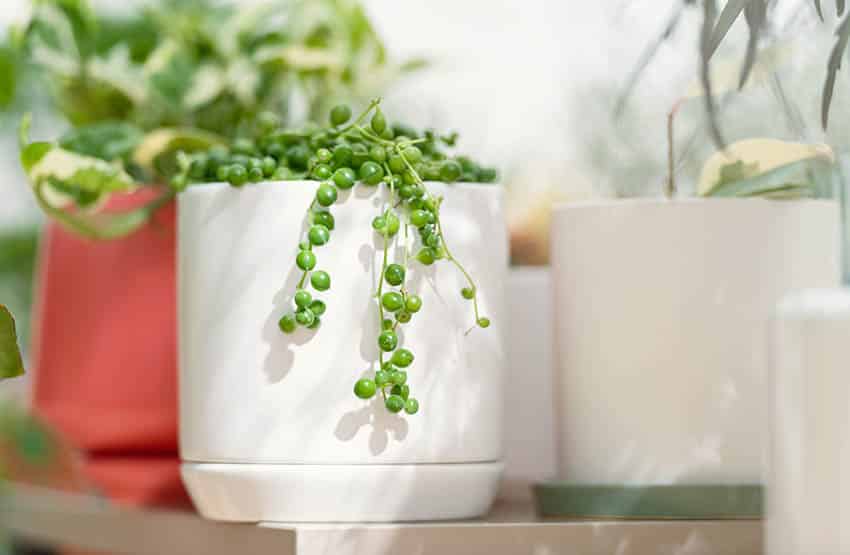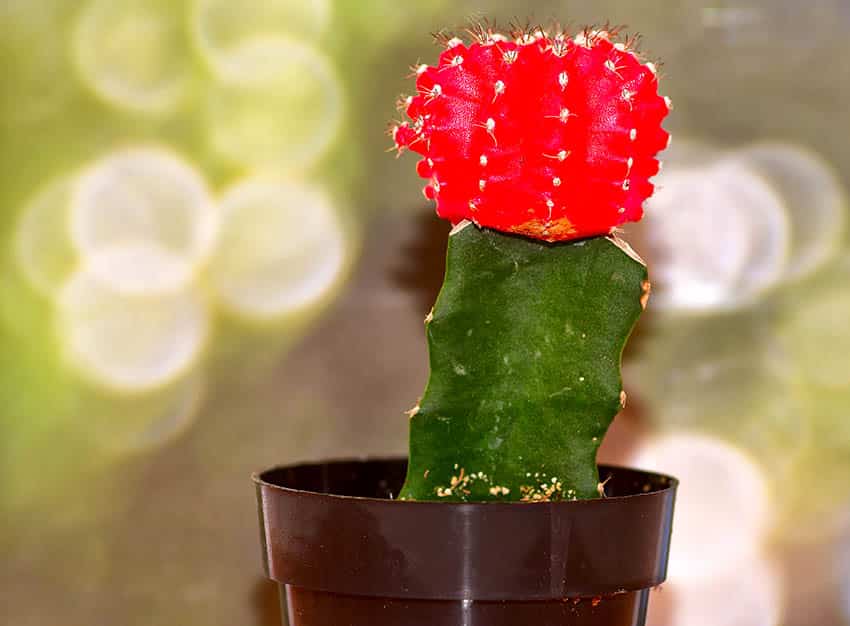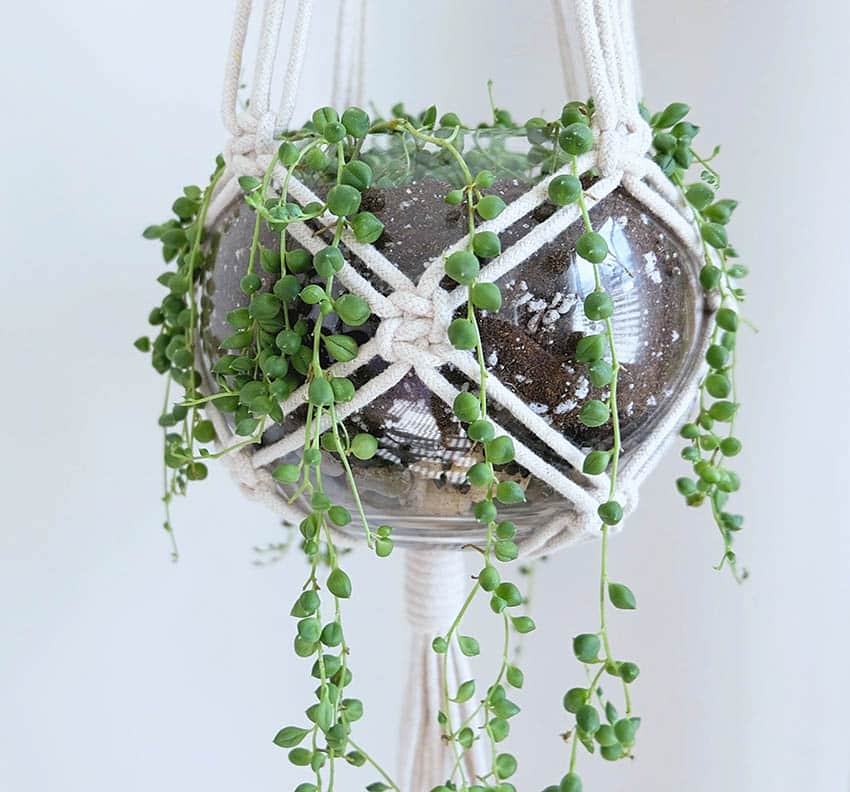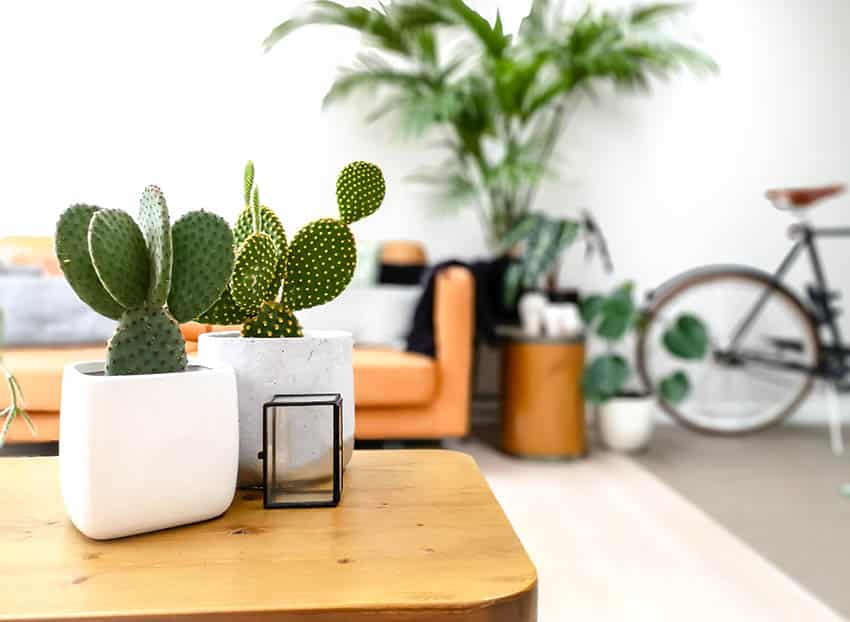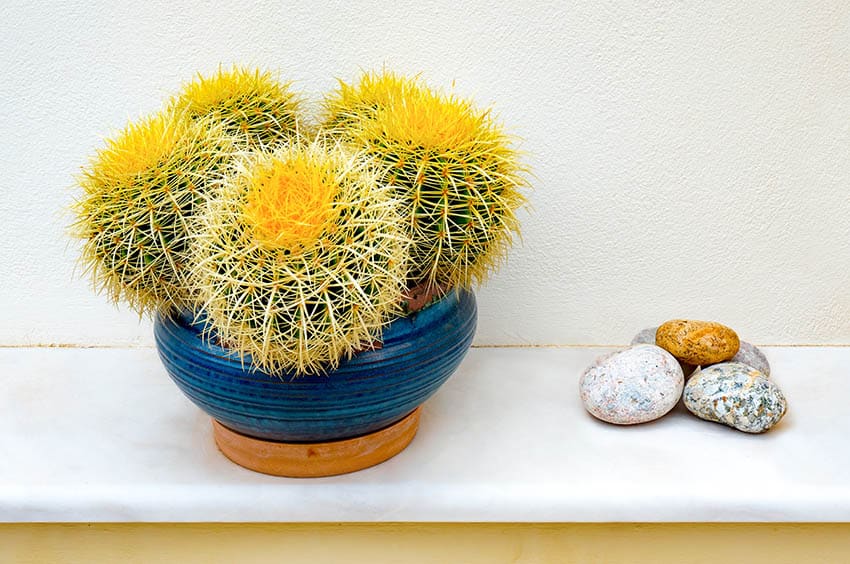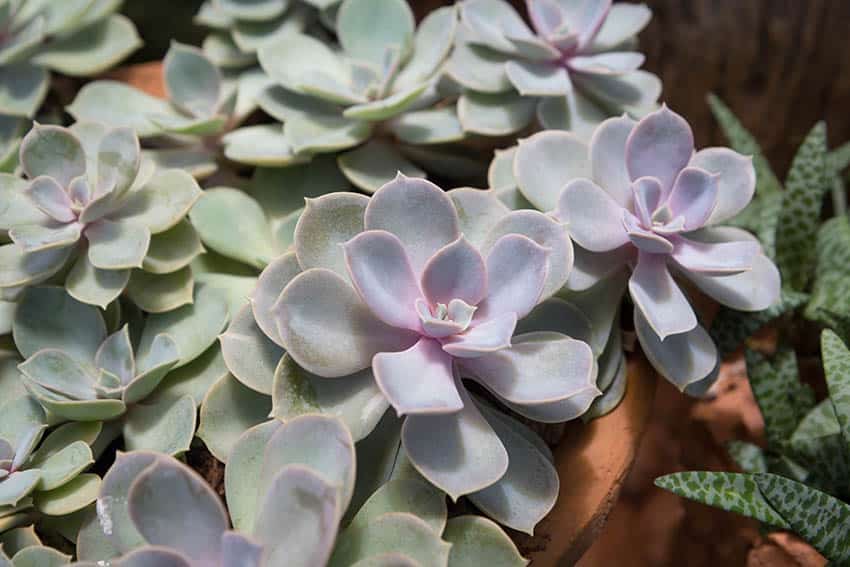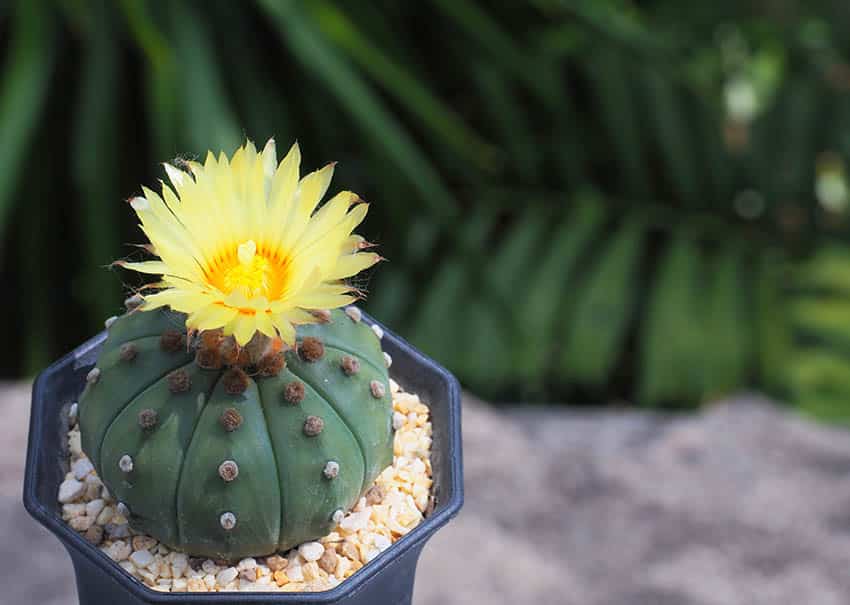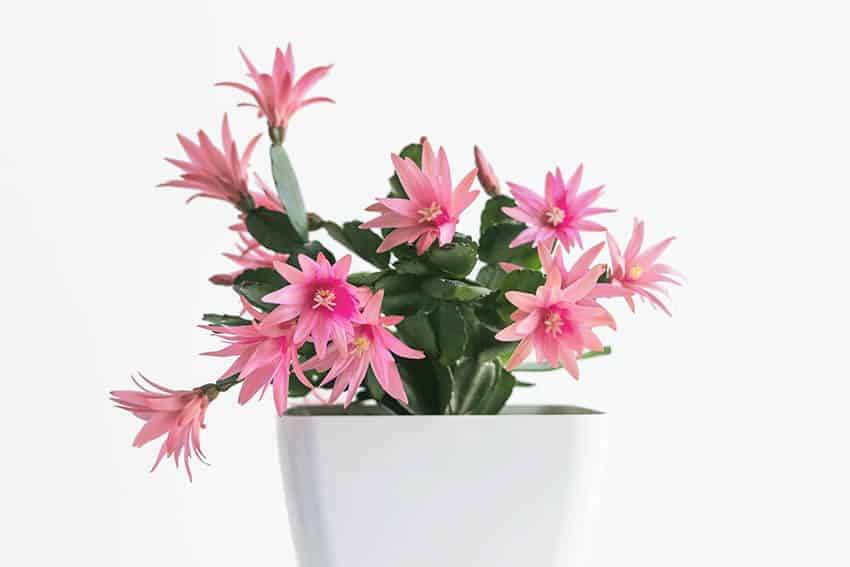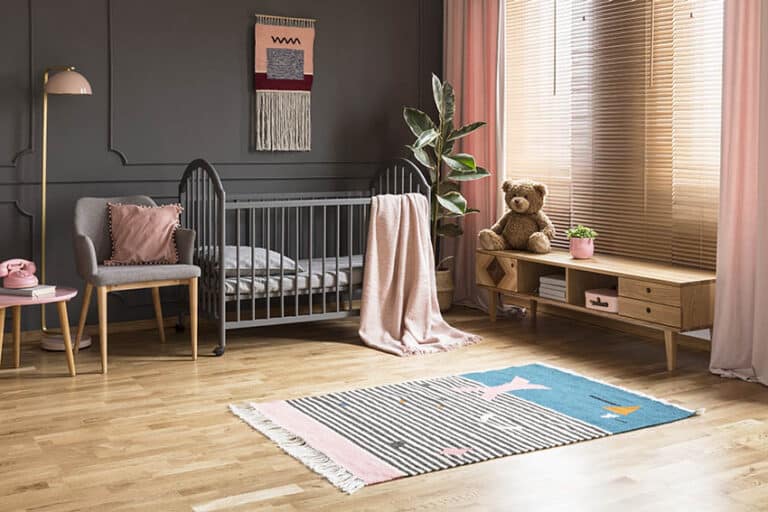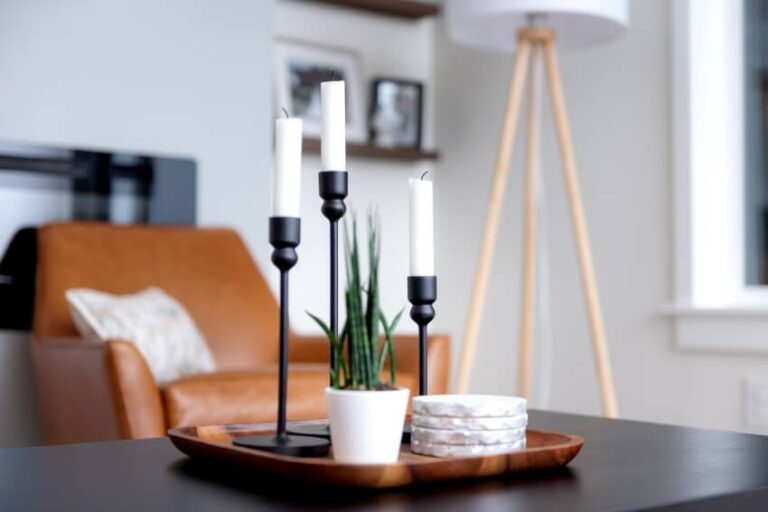15 Types of Indoor Cactus (Houseplant Guide)
Welcome to our gallery of the types of indoor cactus including the best houseplants to choose from, small species, and care tips.
The indoor cactus may be the perfect houseplant. Trending now and forever are the most simple, and easy care plants: cacti. The internet is loaded with pictures of cacti in cute containers shaped like cats and pineapples, planted in arrangements and even decorated for the holidays.
If it’s so easy, why doesn’t everyone have a cactus? The answer is usually because of limited correct information on the care and varieties of cacti. Without further ado, let’s talk about some of the types of indoor cactus. [toc]
Different Types of Indoor Cactus
Considering the thousands of species of cacti and succulents, it would take a very, very long time to list each and every one, so it’s best to narrow these down into a few different categories.
Within these categories are several species that are all different, so knowing which kinds of cacti are related can help you decide which ones to add to your collection next.
Orchid Cactus
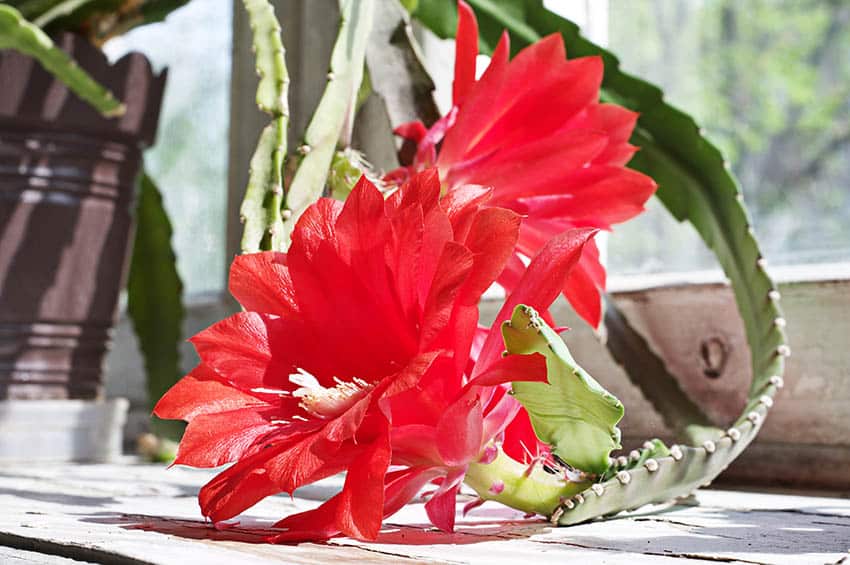
If you’ve ever wondered about those beautiful tree-bound blooming cacti, these are the ones with the vibrantly colored blooms that hang from long stems.
Orchid cacti are epiphytic, meaning they mostly grow in the air attached to other plants, but can be grown in the right soil conditions, so long as they receive lots of light and frequent misting. While slow growing, the flower payout is certainly worth the wait.
Barrel Cactus
Oh, the short, spiky balls of cute that pop up in every store during the summer months! Although generally kept as smaller indoor plants, barrel cacti, including the saguaro cactus, actually grow quite large in their natural habitats.
Keep them happy long enough, and you’ll have yourself a very large, spiky, oblong ball of cute. These cacti typically require as much full sun as you can provide, but artificial lights can help speed up the growth process. Some even bloom!
Euphorbia
(Caution toxic sap) Generally laden with attractive leaf colors or blooms, euphorbia are a very diverse type of cacti with lots of variety.
The beloved African milk tree, as well as crown of thorns, are examples of euphorbia species, both of which possess the classic milky sap which is very sticky and can be toxic, depending on the variety.
However, if kept out of the reach of children and pets, euphorbias have lots of aesthetic appeal to offer, and aren’t very fussy. Se this article for more about houseplants that are safe for cats.
Succulents
At $3-$5 a pop at literally every big box store, these are by far the most popular and widespread type of cactus. Succulents are used for everything: offices, kitchens, gifts, you name it.
Perhaps one of the most biodiverse subspecies of cacti, succulents come in almost every color, shape, and growth pattern, though most grow in a beautiful rosette pattern. Nearly impossible to kill, succulents don’t like a lot of water, but they do need lots of light.
Vining Succulents
Succulents that vine are generally not for beginners. Even some of the most experienced plant people of the world struggle with string-of-pearls and burro’s tail, but don’t let this discourage you.
Any type of succulent on a string will need more than six hours of direct sun every day but doesn’t require as much water as any other cactus species. It’s best to let the soil dry out entirely before re-soaking, as this encourages the roots of these plants to spread out more.
Types of Cactus Houseplants
For most intents and purposes, succulents are usually a great choice for houseplants, as they can tolerate quite a lot of discomfort and don’t mind the occasional under- or over-watering.
Even better about succulents is that they’re very easy to propagate, so you can build a succulent garden with just a few plants or share the cactus love with friends and family. Below are a few types of cacti that are usually seen as houseplants.
Moon Cactus
You’ve likely seen a moon cactus before in your life, especially if you’ve ever been to a home improvement store or a houseplant nursery.
If you’re looking to purchase one, check the bottom of the stem where it meets the soil to ensure there is no rot, and be sure to avoid those with false flowers glued on top. Though cute, these little guys are often mistreated when being sold in mass quantities.
Echeveria
The lovely rosette appearance of echeveria makes for the perfect centerpiece in a well-lit room. Also commonly found in stores, echeveria is another subspecies with tons of color options, and all of them require the same care: lots of light, little water.
These are best planted in the hotter rooms of your house, however, as colder temperatures stunt new growth.
String of Pearls
From variegated types to strings-of-bananas, there’s a species of this succulent that fits you. Though trickier, spring-of-pearls and its associates are most commonly planted in hanging baskets.
However, beware: it’s easy to forget to water a hanging basket of succulents, and can be difficult to bring them back from a bad drought. This is a great species to go for if you’ve mastered all the rest!
Christmas Cactus
Every office has one of these, somewhere. Elegant silky blooms fall from cascading deep green foliage, making for the most exquisite cactus houseplant the plant kingdom has to offer, aside from the really hard-to-find species.
Sold basically everywhere you can buy soil and a planter, Christmas cacti make fantastic houseplants and will literally tolerate anything you do to them (almost).
Prickly Pear Cactus
These little gems range from huge to tiny sizes, and almost all look like bunny ears at some point in their lives, which is why they’re often referred to as the bunny ears cactus.
Some varieties have soft clusters of needles, while others possess long, sharp prickles that somehow always manage to get you during the repotting process. Nevertheless, these are some of the most reliable cacti for indoor growing.
Common Cactus Houseplants
The types of cacti you can grow indoors are really endless, but there are several that are commonly found in home environments. Some of these species can be found anywhere, but there are a few that can be tricky to get a hold of.
Do keep in mind that while regional restrictions mean that some species will not grow in certain areas of North America, even indoors, many are very versatile and tolerant.
Bunny Ears Cactus
Small, cute, and relatively easy to care for, the bunny ears cactus is a species that grows in sections, adding new growths at the tops of existing ones.
These cacti need very little water, and will bloom at the height of summer in most climates if allowed to dry completely between watering!
Golden Barrel Cactus
Between the deep green and golden hues of this cactus is a wonderful contrast that makes it a very common household gift.
This cacti is short, round, and covered in beautiful spikes that resemble sewing needles, but not to worry; transplanting is as easy as putting on a pair of gloves!
Fairy Washboard (Haworthia)
Common species of haworthia include the window pane plant, a succulent boasting translucent leaf tips, and the zebra haworthia, with its white stripes on dark green aloe-shaped succulent leaves.
Haworthia come in a huge variety and are very easy to care for, making them one of the most common cacti in households yet.
Dusty Rose Echeveria
One of Pinterest’s most beloved succulents, dusty rose echeveria looks precisely as it sounds, with a perfect rosette of pale rose-colored leaves that repel water (which is super fun to watch!).
Easy-care and generally simple to propagate, this succulent draws looks and love from every type of plant collector.
Although these types of cactus species are some of the most common in households today, ever-changing trends bear witness to huge upticks in sales of a wide variety of cacti every year. There are constantly some new and some old species coming into the spotlight. Keep an eye out for unique species in stores that curate their plants!
Mini Cactus Types & Small Species
If a full-grown saguaro cactus simply isn’t going to fit into your space, there are lots of other options to choose from. It might be time to consider the tiny cactus route so that while you can’t hang a hat from your cacti, you can still enjoy the beauty of desert flora from the comfort of your couch.
Here a few of the best options to keep cacti within your reach if you’re limited on space.
Star Cactus
When cactus meets starfish, the star cactus makes its appearance, with only five symmetrical leaves and a gorgeous bloom in almost any color you can imagine in the center.
Star cacti require very little attention, needing only occasional watering; they’ll begin to flatten and turn brown when they’re either under- or over-watered. With that built-in care signal, the star is a simple miniature species.
Bunny Ears Cactus
These cacti, although they may grow quite large, can be kept small and dainty by pruning. For this reason, it’s easy to keep this species as small or large as you would like.
You can also try planting the pruned sections into their own little pots for additional plants to place strategically around your home or office!
Kitten Ears
A trailing species, kitten ears are about as cute as they sound; velvety, plush, and succulent, the leaves of kitten ears trail from the planter down its sides to the surface it sits on.
When they need a trim, or become too leggy, simply remove the lengths and stick them right into soil before watering to ensure that new roots grow from the trimmed pieces.
Indoor Cacti Q & A
After all this information, you might still have a few questions about growing parameters, which types of cacti to try, and where to start, here are a few subjects you may want to take a look at. Chances are, one of your questions is listed below!
What Are the Best Types of Cacti to Grow Indoors?
Typically, it depends on where you’re located. Cacti with higher light and temperature needs, such as the saguaro, may not be best for someone who lives in a cold, dark state. However, some cacti do not mind the low light in these places, such as the moon cactus.
Check with zone requirements and measure how much light you receive indoors using a phone app, then cross-reference with a database to figure out which to grow.
You’ll want to additionally consider starting with easier cacti to grow. Then once you’ve mastered a few of these species, you can branch out to try more difficult cacti, such as the queen of the night, which are epiphytic and require special types of fertilizers.
One of the very best types of indoor cacti species to start growing is the christmas cactus, which will grow through almost anything!
What is the Easiest Cactus to Grow?
This answer largely depends on who you ask. Some say barrel cacti are easiest, whereas people living in more humid climates argue that epiphytic cacti are easier to grow. Depending on where you live, there are a few very easy options.
If you live in a colder, wetter climate with few days of sunlight and lower temperatures, try starting with a basic succulent, such as echeveria. This way, you can accurately determine how much water, light, and heat your cactus needs just by when it wilts and when it grows.
For hotter climates, try starting with something easy from a big box store, such as a moon or a pencil cactus. These are also quite easy to read, as they show obvious signs of distress when they are unhappy. Read more about indoor plants that like sunlight here.
Do Cacti Purify Air?
There’s a long and short to answer to this question. The short answer is yes, all plants purify air, but it’s nearly impossible to count on houseplants alone to do so.
The longer is that while plants do help to oxygenate the air, this really only works in tiny, itty-bitty spaces, such as a closed-off cubicle, and the plant would need to be quite large.
All types of indoor cactus and succulents purify the air and absorb harmful bacteria to some degree. Read more about indoor plants that remove toxins here.
That being said, most of the oxygen in the Earth’s atmosphere is not from plants, but rather from microbes in the environment. These occur in oceans, soil, forests, and other places.
If you were to have, say, a few fish tanks, some mushroom growing kits, and an entire room chock-full of plants, that might make a tiny dent in the air quality of your home. Generally, plants are more relaxing than purifying, so the purification thing is really not as effective as one would think.
Where Should I Place My Cactus?
It depends on how much light you have in your home, and also which kind of light you have available. Most cacti will prefer a very bright spot with lots of natural light coming in from many angles, but will settle for a window with some consistent turning from time to time in order to prevent legginess.
If you have an alternative light source, such as a full-spectrum LED lamp or a grow light, then you are no longer limited to windows and brightly-lit spaces. So long as you leave the light on for 8 or more hours per day close to the cactus, you will have a happy, healthy plant.
What are your favorite types of indoor cactus? Let us know in the comments to share your thoughts. For more related content visit our page about the best types of indoor trees here.

